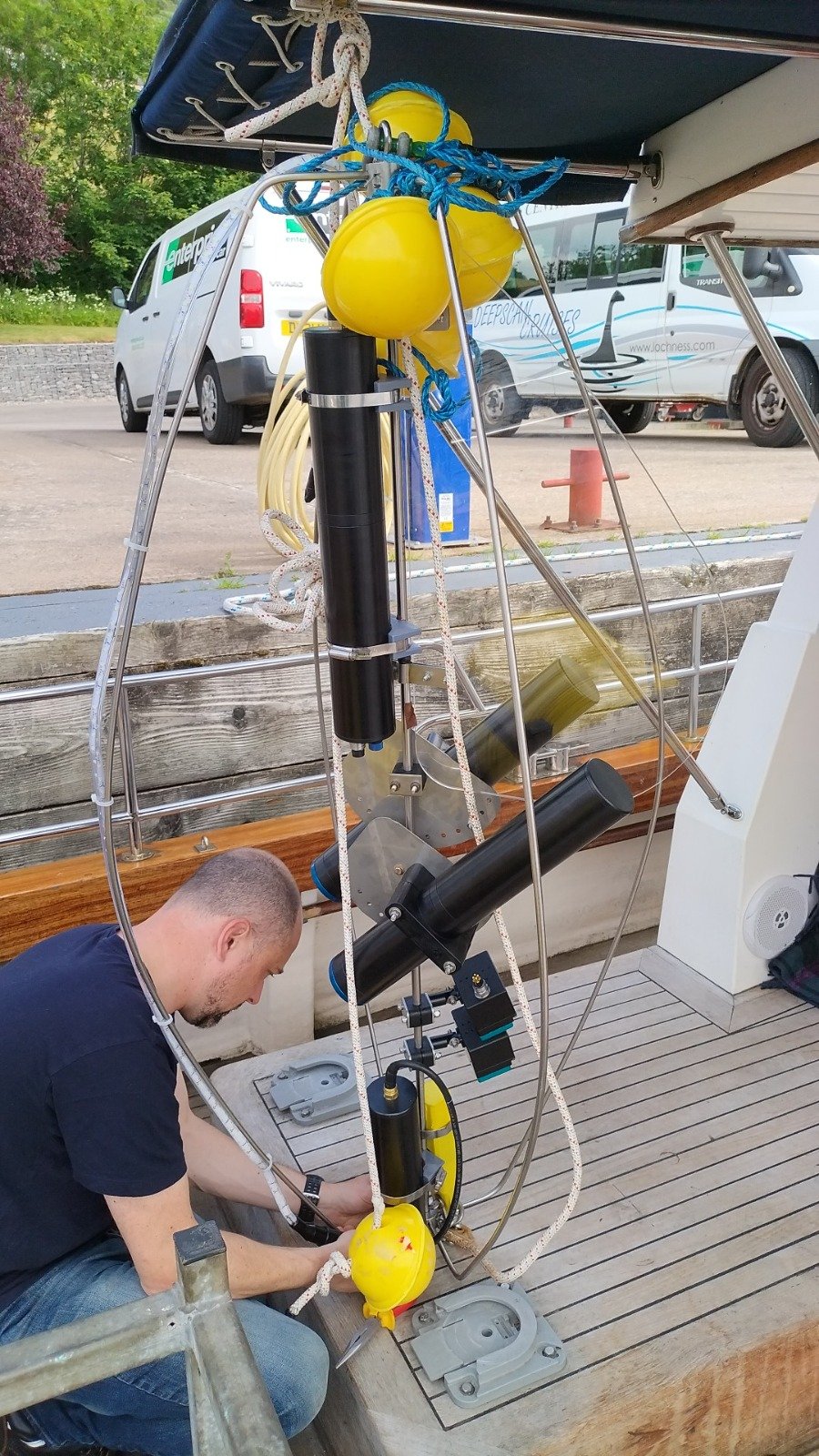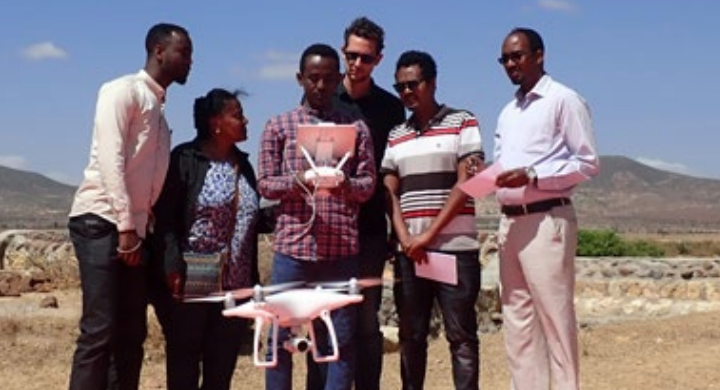
Biodiversity
in a Backpack
UK Tech x Local Knowledge + the Big Data Gap
The biodiversity financing gap is $700bn per year, but even the most innovative solutions can’t scale without accessible, reliable data.
November 2025 marks 12 months since COP16 in Colombia raised the need to support capacity building to enhance efforts in biodiversity conservation in LMICs. Countries including the UK and France have pledged to lead efforts to align climate finance with global biodiversity goals, and while there is growing interest in biodiversity credits to drive climate finance, the evidence base remains thin.
If we are serious about reversing biodiversity loss, we must invest in tools, training, and partnerships that shift the balance from data deserts to data-driven action.
From AI-powered insect sensors in Kenya to portable DNA labs in Colombia, two projects are demonstrating how UK science and innovation can help close the biodiversity data gap in countries most at risk.
They model what's possible when tech is made accessible, when local production and upskilling are part of the plan, and when collaboration creates funding continuity.
Watch the film
Discover solutions from UKCEH and Oxford Nanopore Technologies being adapted for use in Kenya and Colombia, making biodiversity monitoring faster, cheaper, and accessible where it's needed most.
Read the report
Explore detailed case studies on both projects, plus three additional pilots. We share five cross-cutting lessons for biodiversity, outlining what it will take to translate this innovation potential into real-world impact.
“Many drug products and many cures are right there. Life has been evolving for millions of years, and it's developing novel compounds and solutions to problems that could greatly benefit humanity…. That's why it's such a critical moment to use tools like this, to use DNA sequencing to empower people so that we can understand, protect and conserve life on our planet."
Dr. Aaron Pomerantz
Oxford Nanopore Technologies
Tackling the illegal wildlife trade in Colombia with MinION technology
-
Illegal wildlife trafficking is the fourth largest illegal activity in the world. In Colombia, authorities confiscate thousands of trafficked animals each year, but face a critical challenge: without knowing what species they are or where they came from, safe release is impossible. Release an animal to the wrong location and you risk damaging fragile ecosystems. Keep them in captivity and you've lost the chance to restore wild populations.
-
Oxford Nanopore Technologies developed MinION. It’s a “small but mighty” piece of equipment that enables sequencing capability for anyone, in any lab, anywhere. Essentially, it’s a portable DNA sequencer that fits in a backpack and connects to a laptop via USB. It can identify species and trace their geographic origins in real-time.
-
With FCDO support, researchers at the Alexander von Humboldt Biological Resources Research Institute piloted MinION technology to identify yellow-crowned parrots, a commonly trafficked species. The results were remarkable:
148 DNA barcodes generated for 21 species
First-ever global records for 5 species (3 mammals, 2 reptiles)
Cost reduced from $14 to $0.46 per DNA sequence
Results in 48 hours versus weeks for traditional methods
-
The technology produces evidence which could support release strategies and open new possibilities for legal enforcement and rehabilitation. Crucially, it demonstrates how UK innovation can be transferred, adapted, and owned locally.
This pilot continues into their third phase of development. Keep up to date on their profile page.
Making insect monitoring affordable in Kenya with the Mini AMI
-
In Kenya, biodiversity is rich but understudied. Insects (essential as pollinators and the foundation of food chains) weren't even included in the national Biodiversity Action Plan, simply because they were too hard to study.
-
The UK Centre for Ecology & Hydrology (UKCEH) developed the AMI (Automated Monitoring of Insects) system, which combines cameras, acoustic sensors, and AI to automatically monitor insect populations. But in its full form, it was too expensive and bulky for use in rural areas.
-
With support from the FCDO, UKCEH worked with partners in Kenya to co-design a "mini-AMI" system. Through local consultation and user research, they discovered that it was not only possible, but more affordable and accessible than they anticipated.
50% cost reduction: Manufacturing the system locally in Kenya cut costs from £6,000 to £3,000
Local capacity building: Parts can be sourced in-country, enabling local repair and maintenance
Real-world demand: They discovered multiple potential users.
-
This research proved that innovative technology could not only be scaled but could also help build jobs and capacity locally. The work informs the UKCEH’s work with the Department for Environment, Food & Rural Affairs (DEFRA)’s Innovate for Nature programme—offering a brilliant example of cross-government funding continuity for tech x biodiversity.
Two technologies, one mission, and outsized potential
Explore the results from both pilots and consider how they could be further developed to help solve global biodiversity goals.
Silent sentinels for biodiversity monitoring
AI is a critical tool to analyse the data, but sensor networks are one of the most promising tools for monitoring biodiversity at scale. Earlier this year, they featured as one of our Nine Underhyped Technologies.
This AI-generated podcast explores why interconnected sensor systems, such as the AMI mini, deserve far more attention. These networks capture continuous data where satellites can't see: under forest canopies, tracking nocturnal species, and monitoring the small-scale changes critical for conservation.
“To be able to conserve landscapes, we need to study at these really wide spatial scales. And to understand what's happening with climate change (especially extreme weather events), we need to study at those wide temporal scales as well. We simply can't do that without AI capability.”
Dr Jenna Lawson
UKCEH
Explore our biodiversity and nature portfolio
Since 2016, we’ve supported 94 ideas and engaged 122 FCDO staff across 35 countries. Our biodiversity and nature portfolio is growing steadily, each building on the learnings of the last.
Scroll through our in-depth research
We’ve been developing bodies of evidence for 10 years, bringing together learnings and insights from across our portfolio to share what works when harnessing frontier technologies to solve real-world problems. You can also explore our podcasts, films, newsletters or futures explorations for more.






































